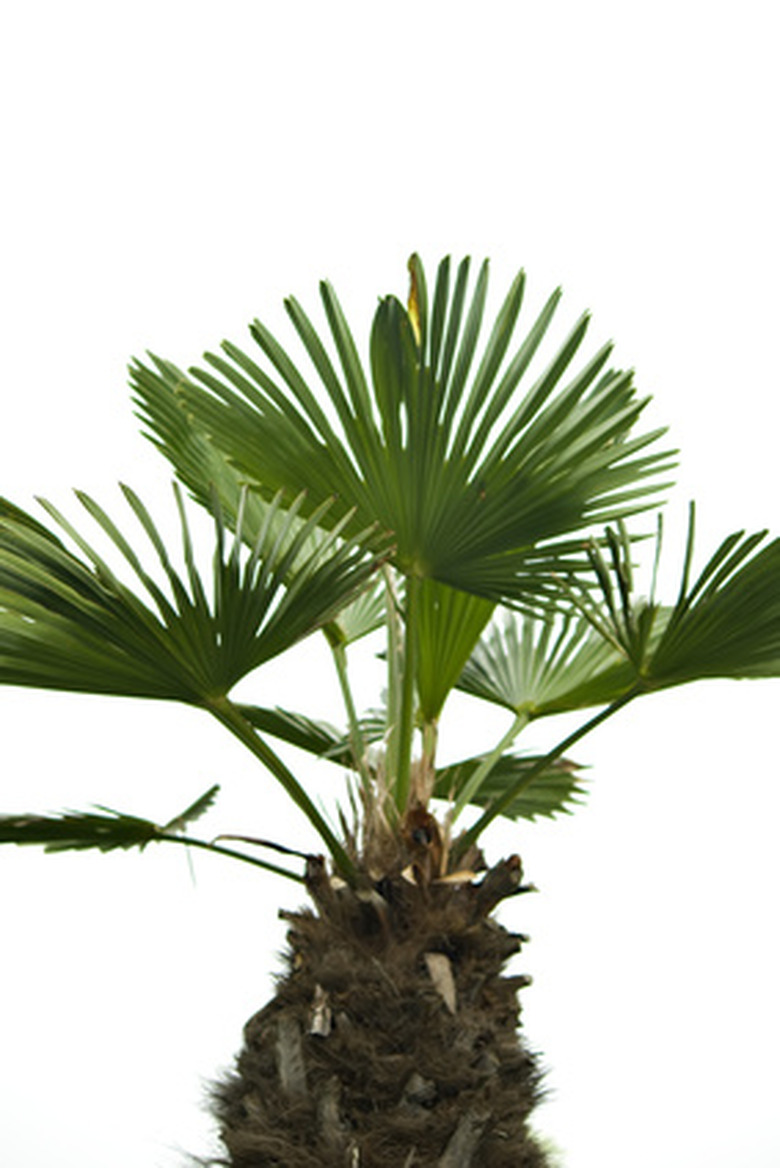How To Repot A Palm
Things Needed
- Deep planting container (with drainage holes)
- Tarp
- Potting soil
- Slow-release fertilizer (granular)
Whether you grow a potted palm outdoors or indoors, container-grown palm trees generally thrive as long as you provide adequate growing conditions for them. Start a palm tree in a small container and then watch as the palm grows because it will indicate when it needs a larger container. Repot a palm tree when necessary to keep these attractive tropical trees lush and vibrant in your indoor or outdoor growing area.
Step 1
Select a new planting container for the potted palm. Choose a heavy container that will support the weight of the palm and make it approximately 4 to 6 inches larger across than the current container. Select a deep container, approximately 12 inches deeper than the root ball of the palm.
Step 2
Spread the tarp out to keep your work area clean as you transplant the palm tree.
- Whether you grow a potted palm outdoors or indoors, container-grown palm trees generally thrive as long as you provide adequate growing conditions for them.
- Spread the tarp out to keep your work area clean as you transplant the palm tree.
Step 3
Remove the palm tree from its current container by placing the container on its side on the ground. Gently loosen the sides of the container by tapping them and pull the palm tree from the container.
Step 4
Fill the new container with approximately 5 inches of new potting soil. Add an appropriate amount of slow-release granular fertilizer to this soil, consulting the package recommendations for the size of the growing container. Mix the fertilizer and soil well.
Step 5
Place the palm tree into the new container and lightly sprinkle potting soil around the roots to cover them approximately halfway. Shake the container lightly to get the potting soil into all the small areas of the root system. Continue filling the container with potting soil until the soil reaches 2 inches below the top of the container. Tamp the soil down firmly with your hands.
- Remove the palm tree from its current container by placing the container on its side on the ground.
Step 6
Water the newly transplanted potted palm tree generously, allowing the water to drain out of the drainage holes completely. Water the palm tree two more times, allowing the soil to drain completely each time.
Step 7
Place the potted palm back into its growing location and keep the soil carefully watered during the first two to four weeks after transplanting. This ensures the tree acclimates successfully to the move.
Tip
Perform transplants of potted palms growing outdoors during the spring and early summer for best results. Transplant indoor palms at any time of the year. When you see roots protruding out from the bottom drainage holes of the current container, this indicates the palm tree requires repotting. If the soil looks sticky in the container, this also indicates the palm tree needs repotting. Generally, repot palm trees every one or two years for best growing results.
